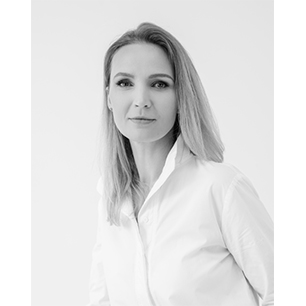Privatus gyvenamasis 2019 Nr. 174
Apie projektą:
Šalis: Lietuva
Plotas: 85 m2
„Malūnų butas“
Šis projektas buvo kuriamas autentiškoje Vilniaus senamiesčio dalyje. Butas yra restauruotame XVI a. name, kurio teritorijoje iki tol yra veikusios keramikų dirbtuvės. Pats namas yra Malūnų g., kurios pavadinimas kilęs nuo anskčiau čia buvusių vandens malūnų. Taigi, kontekstas buvo tikrai turtingas ir įdomus. Mums buvo svarbu prisiliesti prie šios erdvės istorijos, įsigilinti į ją ir perteikti ją nūdienos kalba. Įkvėpimo sėmėmės senose keramikų dirbtuvių ir malūnų erdvėse – nagrinėjome šių erdvių šviesą, spalvinę gamą, proporcijas, medžiagiškumą ir formas. Taip gimė geometrinis grindų raštas, stambios ir kartais masyvios baldų formos ar grubios tekstūros. Interjere atidengėme plytų sienas ir palikome atviras naujai lietas betonines perdangas. Norėjosi sugretinti sena ir nauja. Papildėme interjerą natūraliomios medžiagomis, tokiomis kaip medžio masyvas, molis, bronza, terrazzo, betonas, oda, linas, popieriaus pluoštas, vilna. Žaidėme šių medžiagų šiltais ir šaltais koloritais, lygiomis ir grubiomis tekstūromis, blizgiais ir matiniais paviršiais. Mums buvo svarbu, kokią nuotaiką kiekviena šių medžiagų įneša į šį interjerą ir kaip jį papildo.Didelį dėmesį skyrėme detalėms – nuo baldinių kojelių, rankenėlių iki bronzinio kabliuko miegamojo nišoje. Kiekvienas baldas ar aksesuaras, atsiradęs šiame interjere, buvo kruopsčiai atrenkamas tam, kad sudarytų harmoningą visumą. Tai namai, kurie atspindi tikrąją savo prigimtį, alsuoja savo istorija, bet yra pritaikyti šiuolaikiškam gyvenimo būdui.
English:
This apartment is situated in an authentic Vilius old town, in the 16th century building, which was recently renovated. It is known that ceramics workshops operated in this house some centuries earlier. On top of that, the house is situated in Millers' street (Malūnų gatvė), as the name indicates, water mills were present here as well. Overall, the context for the project is truly rich in historical facts and objects for inspiration.
Consequently, this project attempts to retain a close link with the history of the building and the area around. The history must be recognizable but should be conveyed using words from modern-day vocabulary.
Historic ceramics workshops and water mills were a source of inspiration: color palettes, proportions, fabrics and shapes were taken from the historic remains of these buildings. That is how a geometric floor ornament, large-scale and massive furniture silhouettes, and raw textures were born. An old brick wall was intentionally left uncovered together with concrete spans: old and new are side by side. Natural fabrics, such as whole wood, clay, bronze, terrazzo, concrete, leather, linen, paper fiber, and wool, were added to the interior. Warm and cold colors of these materials, smooth and rough, mat and glossy surfaces interplay together. It was important to notice how each of these different materials bring a different mood to each room and to the apartment.Big attention was devoted to details in this apartment: from special furniture legs, to handles and bronze hook in the niche of the bedroom. Every piece of furniture or an accessory appearing in the apartment were carefully chosen in order to create a harmonic whole.This is a modern home, which indeed reflect its original historic roots, but is conveniently adapted to a modern way of living.
Nuotraukos: Norbert Tukaj












